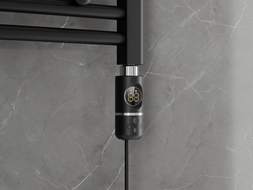
What is an underlay for vinyl panels and why is it important?
Underlays for vinyl panels are among the most important elements that cannot be overlooked during the installation of a new floor. The choice of the appropriate underlay will significantly affect not only the appearance but also the durability of the floor and the comfort of its use.
Many people wonder about the necessity of using an additional layer between the screed and the surface of the panels, so we will try to explain why one cannot do without an underlay when installing vinyl panels.
Types of underlays for vinyl panels
There are different types of underlays tailored to specific types of vinyl panels, differing in the material from which they are made.
You can choose from the following types of floor underlays:
- extruded polystyrene underlays – these are underlays made from a lightweight and resilient material that provides excellent acoustic and thermal insulation;
- aluminum foil underlay for vinyl panels – most often used with underfloor heating, valued for its thermal insulation properties;
- permeable membrane underlays - allows moisture to evaporate, works excellently in rooms such as kitchens and bathrooms;
- natural material underlays - made from materials like corrugated cardboard, cork, or wood fibers, are less durable and resistant than other underlays for vinyl panels.
The choice of a specific type of underlay also depends on the method of installing the panels - different underlays are chosen for floating systems and others for glued panels. You can order vinyl panels on Mexen.pl, which use a simple assembly system - Uniclick. This solution allows for quick and precise joining of the boards.
What underlay for vinyl panels on underfloor heating?
Underfloor heating is a solution that is becoming increasingly popular, especially in rooms such as kitchens and bathrooms.
In the case of vinyl panels installed on underfloor heating, we use low thermal resistance underlay that allows heat to pass through. A good choice would be underlay made of cork or polyethylene foam.
In the case of underfloor heating, not only the type of underlay matters, but also its thickness. The most recommended solution is polystyrene underlays, which allow almost all heat to pass through and also have other properties - including resistance to moisture.
What is the purpose of the underlay for vinyl panels?
The underlay for the panels is an additional layer that serves several important functions, such as:
- noise reduction – floor panels can be noisy; if you don’t want the sound of every step to echo throughout the house, you must invest in an appropriately selected underlay, ensuring acoustic insulation;
- proper thermal insulation – a good underlay, being an additional layer of flooring, helps reduce any potential heat loss in the room;
- protection against moisture – some types of underlays have additional properties that prevent moisture from penetrating from the ground, which is particularly important in rooms that are exposed to water, namely in kitchens and bathrooms;
- reduction of floor unevenness – using an underlay for vinyl panels allows for leveling the floor.
What thickness of underlay for vinyl panels is best?
Experts recommend that the underlay should have a thickness of 1 to 3 millimeters.
The issue of how thick the underlay for vinyl panels will be installed depends on the type of panels and whether an underfloor heating system is applied or not.
In the case of underlay for underfloor heating, it should be as thin and permeable as possible.
In every other situation, the underlay under panels serves as thermal insulation, here the type of substrate should be considered. If the panels are laid on a wooden floor or ceramic tiles, the underlay may be slightly thicker.
In situations where the underlay is laid directly on a cement screed, it is worth considering choosing a thicker version, which will effectively insulate the panels from the ground.
What types of flooring underlays for vinyl panels should be avoided?
The underlay for vinyl panels must be both durable and stable as well as flexible enough to adapt to the unevenness of the floor and the load – we think here of both dynamic load and static load.
There are a number of different types of underlays for vinyl panels on the market - before purchase, one should pay attention not only to the price but also to their properties. There are indeed underlays that should be avoided.
Which underlay for vinyl panels works the least well? Examples include:
- polyurethane foam underlays of low density;
- fiber or felt underlays, which are not resistant to abrasion, which can lead to easy damage of the panels.
One should avoid underlays that are too soft and delicate, thus poorly resistant to mechanical damage, as they will not fulfill their functions.
What underlay for vinyl panels? Summary
A good underlay for vinyl flooring should evenly distribute the loads, which helps protect the panels from damage. Furthermore, it should provide acoustic and thermal insulation.
In the case of panels laid on underfloor heating, the underlay must allow for free heat flow. Conversely, when laid on a cold substrate, it aims to provide insulation from the ground to ensure that the floor surface has a pleasant temperature.
When deciding on what underlay for vinyl panels to choose, one must consider aspects such as:
- the type of substrate on which the new floor will be laid;
- the type of room;
- expected acoustic effect;
- whether the vinyl floor will be laid on underfloor heating.
Are you renovating your home or apartment? Check out the floor coverings available on Mexen.pl in several interesting shades to choose from.



















